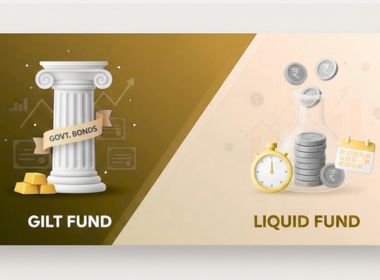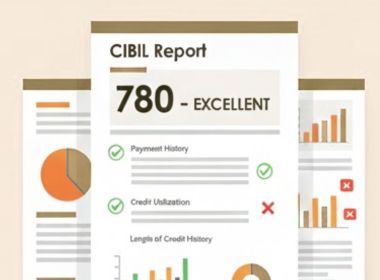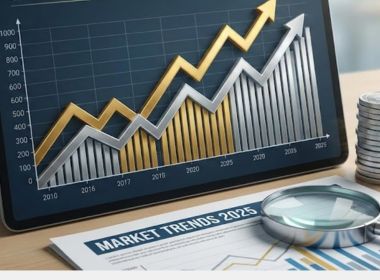Search Suggestions
- Gold Loan
- Money Transfer
- Mutual Funds

MCLR vs EBLR - Which One Saves More on Home Loans?
If you’re trying to get a home loan, the first step is understanding how your interest rate gets determined. In India, MCLR rate and EBLR are two significant benchmarks. Learning what these acronyms stand for, their meanings, and how they compare to each other is important when considering which one might save you more money over the life of your loan.
Table of Content
What is MCLR?
- MCLR full form is Marginal Cost of Funds Based Lending Rate. The MCLR meaning lies in being an internal benchmark used by banks: it reflects their cost of funds (including deposits), operating expenses, reserve requirements, and a margin.
- Under MCLR, when you take a home loan, banks add a spread to their published MCLR to arrive at your interest rate.
- The drawback: changes in RBI’s repo rate or other monetary policy moves may take time to filter into MCLR-based loan rates because banks revise MCLR only at fixed intervals (say, 6 months or 1 year).
What is EBLR?
- EBLR is the External Benchmark Lending Rate (sometimes “Linked Rate”). The meaning of this EBLR rate is a floating rate that is directly linked to an external benchmark (such as the RBI’s repo rate, or treasury bill yields published by FBIL).
- For home loan borrowers, EBLR ensures that rate changes by the RBI are passed down more swiftly to interest rates and consequently to EMIs (Equated Monthly Instalments).
- Banks may adopt spreads or credit risk premiums over the external benchmark to set the final EBLR-based rate.
Feature | MCLR | EBLR |
Benchmark type | Internal (bank’s cost components) | External (e.g. repo rate, T-bill yields) |
Transmission speed | Slower; banks revise MCLR periodically | Faster; changes reflect quickly when benchmark moves |
EMI volatility | Lower, more stable over short term | Higher, more responsive to rate changes |
Transparency | Moderate; internal cost components may be opaque | Higher; external benchmark is public and regulated |
Adoption timeline | Used under older loan agreements (pre-2019) | Mandated for new floating retail & MSME loans from Oct 2019 |
Suggested Read: MCLR Rate vs. Repo Rate Explained: Which Is Better for a Home Loan?
Which One Saves More on Your Home Loan?
In a Falling Interest Rate Cycle:
If you expect policy rates to be cut by the RBI, EBLR is likely to be more beneficial. Because it links directly to external benchmarks, borrowers may see lower EMIs soon after cuts. Many banks passed on rate cuts soon after the June 2025 repo rate reduction to EBLR-linked loans.
In a Rising or Volatile Rate Environment:
Its slower reset of the Marginal Cost of Funds-based Lending Rate (MCLR) could mean that your interest cost doesn’t rise as often as a borrower, giving some stability to your EMI. But yet the other side of this is that the positive effects of falling rates get postponed. On the other hand, EBLR also brings risks: if benchmarks see quick hikes, your interest payments will instantly shoot up too.
Over the Long Term:
If your loan has a long tenure (say 15–20 years), EBLR may end up saving more if rates decline on net over that period. But that’s dependent on spreads, margins, and how fast the bank passes cuts through the system. Check the spread of your bank on MCLR and EBLR comparison. It is critical that you compare what your bank has as a spread on both MCLR and EBLR.
Practical Tips Before You Choose
- Check your current linkage: Many older home loans are still on MCLR. Knowing that helps you see how much benefit a switch to EBLR might bring.
- Compute EMI scenarios: You can use online calculators to compare MCLR + spread with the EBLR + spread across different possible interest rate movements.
- Inquire about spread & margin: A lower spread on MCLR may make it more attractive even if EBLR is faster.
- Risk appetite matters: If you dislike volatility, MCLR’s stability may appeal more.
- Stay updated with RBI policy: Benchmark movements matter more in EBLR-linked home loans.
Suggested Read: 10 Smart Strategies to Repay Your Home Loan Faster
For home loan borrowers, understanding the meaning and full form of MCLR and EBLR, and how EBLR vs MCLR stacks up is essential. As EBLR is more transparent and enables faster pass-through of rate changes, it has strong appeal in a falling interest rate scenario. On the other hand, MCLR provides certainty and stability, which may suit some borrowers. The saving yield ultimately will depend on where interest rates head, your loan term, and how your bank builds its spreads.
CATEGORIES
OUR SERVICES
-

Gold Loan
-

Personal Loan
-

Cibil Score
-

Vehicle Loan
-

Small Business Loan
-

Money Transfer
-

Insurance
-

Mutual Funds
-

SME Loan
-

Corporate Loan
-

NCD
-

PAN Card
-

NPS
-

Custom Offers
-

Digital & Cashless
-

Milligram Rewards
-

Bank Mapping
-

Housing Finance
-

#Big Business Loan
-

#Gold Loan Mela
-

#Kholiye Khushiyon Ki Tijori
-

#Gold Loan At Home
-

#Sunherisoch
RECENT POSTS

Gilt Fund vs Liquid Fund: Full Form, Meaning & SIP Guide
Know More
XIRR in Mutual Funds & SIP: Full Form, Meaning, Formula and How to Calculate
Know More
7 Key Factors to Consider Before Taking an SME Loan
Know More
Difference Between Black Gold and Gold: Everything You Need to Know
Know More
NPS vs EPF: Everything You Need to Know About Retirement Savings
Know More
What is a Credit History? Impact on Credit Score and Credit Report
Know More
Loan Closure Vs. Loan Settlement: Meaning, Benefits, and CIBIL Score Impact
Know More
Is Silver the New Gold? A Look at 2025 Price Trends
Know More
What Are the Various Types of Equity Funds and How They Work?
Know More
Why Are Gold Loans Becoming the Most Preferred Financial Option in 2025?
Know MoreFIN SHORTS

What Are Co-Pay and Deductibles in Insurance Policies?
Know More
Should You Take a Loan Against Your Mutual Fund or SIP?
Know More
Top 5 Best Mid-Cap Mutual Funds to Watch in 2026
Know More
Are Personal Loans Right for Retirees? Key Points to Consider
Know More
What Happens to a Personal Loan After the Borrower Dies?
Know More
Best Loan Choices for Credit Scores of 580 and Below
Know More
7 Reasons Why a Gold Loan Is the Best Option for Small Businesses
Know More
10 Reasons Why People in India Prefer Physical Gold
Know More
Real Estate vs Gold: Which Is a Better Investment in India?
Know More
10 Common Mistakes That Make Investors Lose Money in Mutual Funds
Know More
10 Reasons Why Gold Has So Much Appeal in Uncertain Times
Know More
7 Ways Settling Debt Can Impact Your CIBIL Score
Know More- South +91 99469 01212
- North 1800 313 1212





